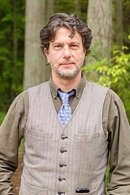Daniel R. Einstein, Ph.D.

Associate Professor, Mechanical Engineering
"It has been said famously that science is about knowing while engineering is about doing. Yet in today’s world, engineers must be both discoverers and creators. In my classes, I seek to empower students by revealing the beautiful connections between nature, the physical world at large and engineering creativity."
Areas of Expertise
- Biomedical engineering
- Computational fluid dynamics
- Computational solid dynamics and fluid structure interactions
- Heart valve mechanics
- Lung mechanics
- Nonlinear solid mechanics
Education
Ph.D., University of Washington
BSME, University of Massachusetts
Background
In 2011, the American Society for Mechanical Engineers published a study entitled The State of Mechanical Engineering Today and Beyond, in which Biomedical Engineering was identified as the top emerging area for the profession, second only to alternative energy. I have worked professionally in this field for 12 years, with a focus on computational solid and fluid dynamics.
My work has included the simulation of the fluid-structure interaction of heart valves, computational inverse material characterization, the development of numerically efficient constitutive models for cardiac and pulmonary tissues, computational geometry, multiscale analysis in pulmonary mechanics, the development of numerical algorithms in support of multiscale analysis, fluid flow and large deformation mechanics, as well as the development of numerical algorithms to enable the extraction of mechanical information from serial medical images. A commonality to these problems is a mechanical understanding that I developed as an undergraduate in Mechanical Engineering.
For example, the signal-processing aspects that formed the core of my acoustic analysis of the heart sounds derived from an early exposure to modal analysis of materials, particularly composites. Specifically, that given the proper boundary conditions, one could infer something about the material properties of the particular object.
I had to go beyond what I had learned as an undergraduate of course. Yet the core idea I brought to the problem from a perspective that I learned as a young, undergraduate engineer.
This brings me to my perspective on engineering education. We cannot know what tomorrow’s problems will be but we can give our students the experience, the intuition and the quantitative ability to first learn them and then solve them.
What drew me specifically to St. Martin’s University is the opportunity to provide and foster that kind of education while also fostering the development of the student’s personhood and spiritual center.
This is a focus that resonates deeply with me.
In my own life, I try to adhere to the Benedictine principles and believe that St. Martin’s twin focus on quality engineering education and a life grounded in these principles is what makes St. Martin’s unique.
Outside of St Martins, I run an urban land trust, the Olympia Coalition for Ecosystems Preservation that I founded in 2013.
Select Publications
- "Fluid–Structure Interaction Analysis of Papillary Muscle Forces Using a Comprehensive Mitral Valve Model with 3D Chordal Structure" by M Toma, MØ Jensen, DR Einstein, AP Yoganathan, RP Cochran, Annals of Biomedical Engineering 44 (4), 942-953
- "AHF: Array-based half-facet data structure for mixed-dimensional and non-manifold meshes" by V Dyedov, N Ray, DR Einstein, X Jiao, TJ Tautges, Engineering with Computers 31 (3), 389-404
- "Fluid–structure interaction and structural analyses using a comprehensive mitral valve model with 3D chordal structure" by M Toma, DR Einstein, CH Bloodworth, RP Cochran, AP Yoganathan, International Journal for Numerical Methods in Biomedical Engineering, 2016
- "Fluid–structure interaction models of the mitral valve: function in normal and pathological states" by KS Kunzelman, DR Einstein, RP Cochran, Philosophical Transactions of the Royal Society of London B: Biological
- "Surface remeshing with robust high-order reconstruction" by N Ray, T Delaney, DR Einstein, X Jiao, Engineering with Computers 30 (4), 487-502
- "A membrane model from implicit elasticity theory: application to visceral pleura" by AD Freed, J Liao, DR Einstein, Biomechanics and Modeling in Mechanobiology 13 (4), 871-881
For a more comprehensive listing of publications, please visit https://scholar.google.com/citations?user=gyH2wUgAAAAJ
